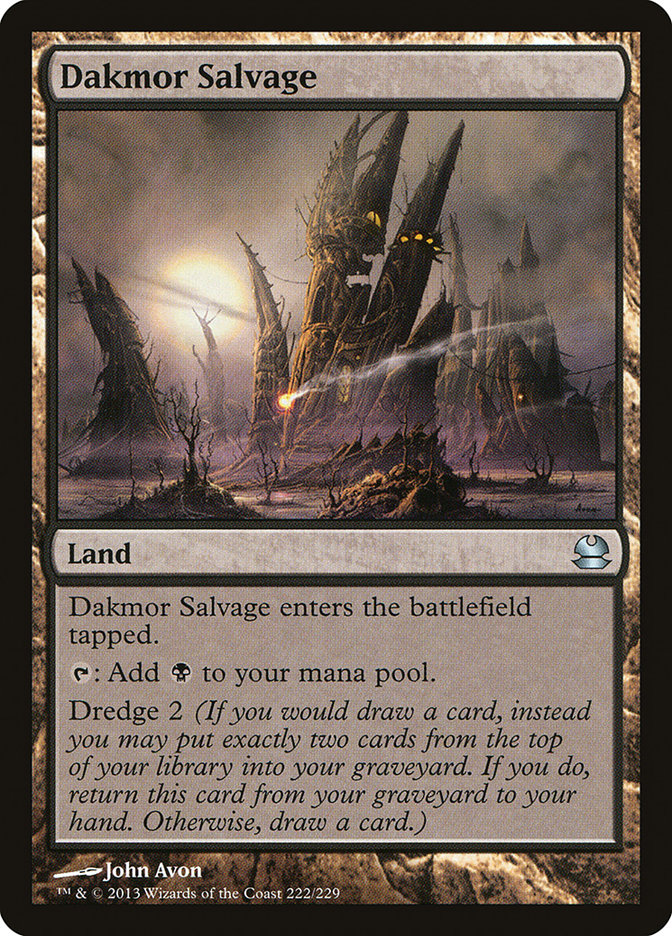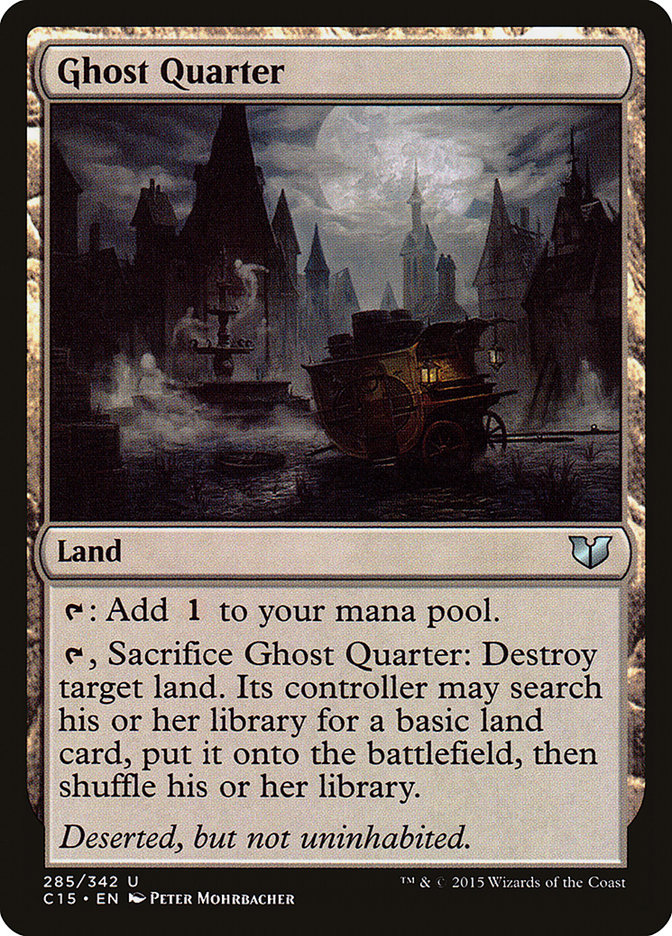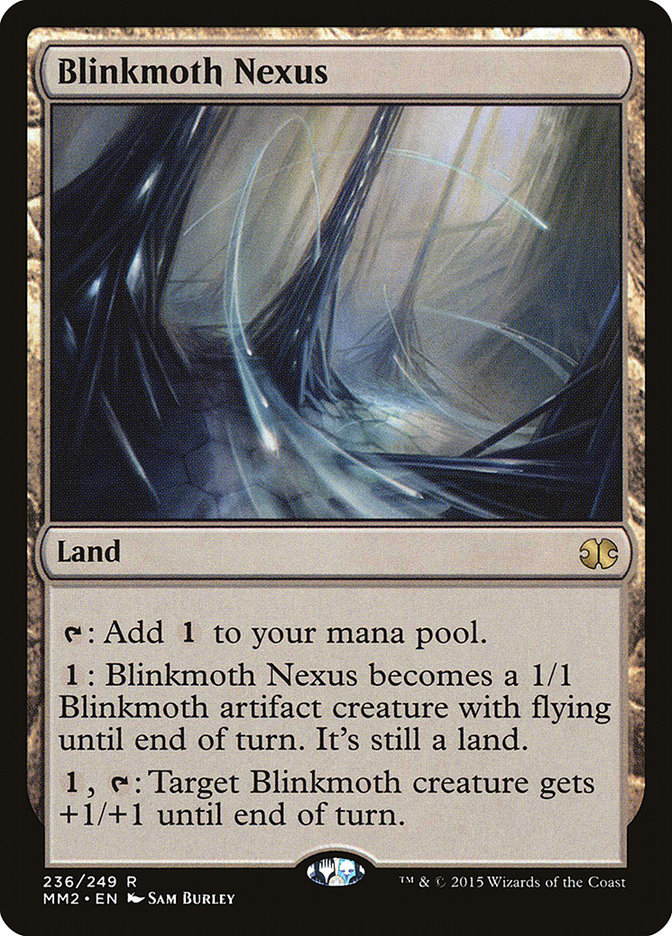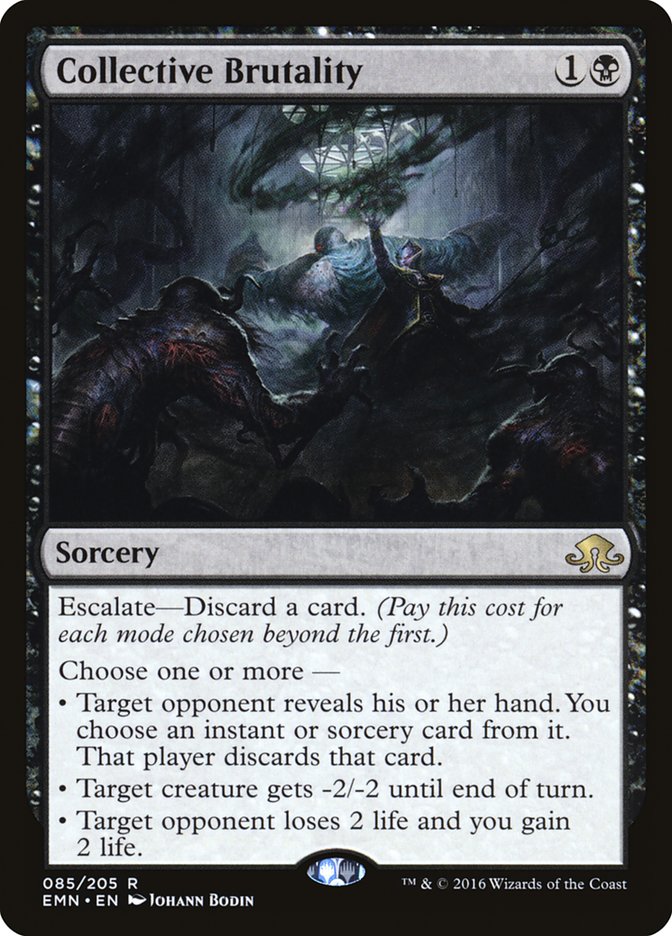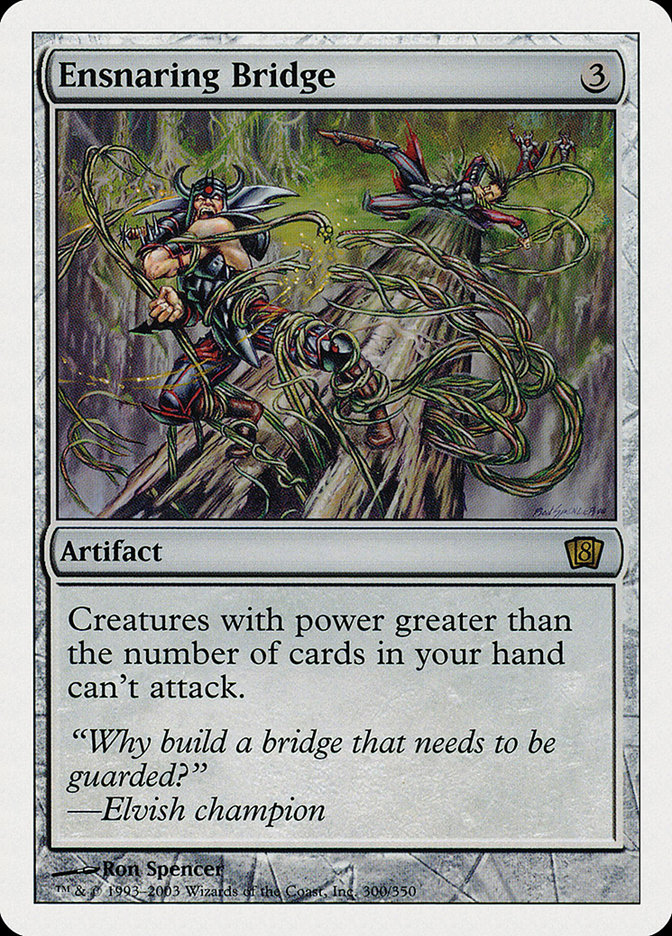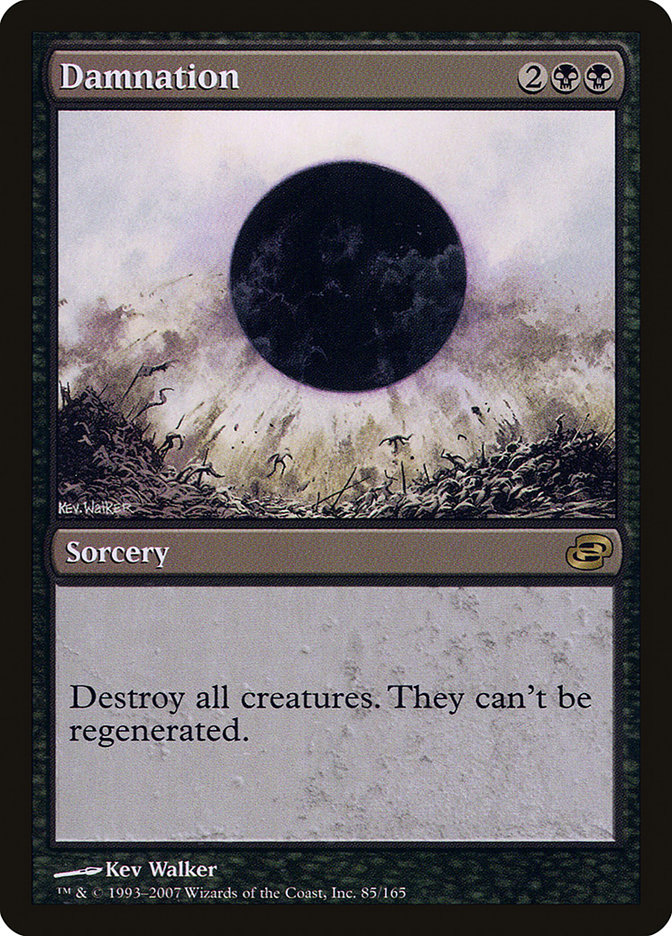8-Rack is a strictly better Jund.
Strong words. Fighting words, even.
This article is a complement to an article a year ago about 8-Rack. Check it out here.
I’ve had 8-Rack as a backup deck to play for about a year now. The metagame just needed to be right. I’ve felt like there’s an optimal build that gets games to a simplified state and doesn’t rely on Ensnaring Bridge to survive. When 8-Rack is being shifted to beat the metagame, you’re better off not playing the deck in the first place.
These are the decks I was aiming to beat at #SCGORL.
Creatures (13)
Planeswalkers (4)
Lands (23)
Spells (20)

Creatures (13)
Lands (18)
Spells (29)
- 2 Forest
- 4 Might of Old Krosa
- 1 Spell Pierce
- 4 Vines of Vastwood
- 1 Distortion Strike
- 2 Twisted Image
- 4 Mutagenic Growth
- 2 Apostle's Blessing
- 4 Gitaxian Probe
- 1 Dismember
- 4 Become Immense
Sideboard

Creatures (26)
- 4 Noble Hierarch
- 2 Spellskite
- 4 Drowner of Hope
- 4 Eldrazi Skyspawner
- 4 Eldrazi Displacer
- 4 Reality Smasher
- 4 Thought-Knot Seer
Lands (21)
Spells (13)

I faced Infect five times and Bant Eldrazi once, going 4-2 total. I didn’t play against Jund, but I knew it was around and wished I had. Any deck that tries to Thoughtseize and Liliana of the Veil me is walking into a bear trap.
Spells (32)

Before I get started on the new list, I want to repeat a key strategic decision that must be adhered to if you intend on playing this version of 8-Rack.
Draw First.
I choose to draw in the dark if I win the die roll. I choose to draw first against everything. I used to choose to play against Affinity, G/R Tron, and Infect. Maybe Game 1 you should still, but you don’t typically have that information in Game 1. In post-sideboard games your deck should be configured where drawing first is good.
You’re gaining a card while (more importantly) denying your opponent a card. Any mulligans are devastating for your opponent who’s playing first, while yours are softened with the draw. Smallpox is a huge factor into this formula, as hitting someone’s two-drop creature is practically lights out.
8-Rack is a good deck. There’s quite a bit of sequencing to it too. You have to have the discipline to continually choose to draw. This goes against all we’ve been trained to do in Magic but is necessary to the function and success of the deck.
This is the build I’d recommend. The maindeck is the same 60. The sideboard is streamlined to shore up the bad matchups, cutting underperformers while playing more of the overperformers.
Spells (32)

No Dakmor Salvage
I tried Dakmor Salvage. The times it entered the battlefield tapped outweighed “going off” with Raven’s Crime. It’s also another nonbasic land to get hit by Blood Moon. It was just so rare that I needed to topdeck a land to retrace Raven’s Crime. I think the sixteenth basic Swamp is just better.
No Other Colorless Lands
I tried both Ghost Quarter and Blinkmoth Nexus as additional utility. After all, the deck plays four Urborg, Tomb of Yawgmoth and has pretty good mana otherwise. Still, I wanted my opening sequences to go unimpeded. I didn’t feel like Ghost Quarter destroying a Tron piece or a creature-land or Blinkmoth Nexus being a fifth Mutavault or being able to give one +1/+1 added very much.
No Collective Brutality
Collective Brutality sucks here.
This is a card advantage deck. There’s no card like Lingering Souls or Golgari Grave-Troll to discard on turn 2. Yes, Collective Brutality is good against Burn, no matter what deck you’re playing it in; however, I’ve found Death’s Shadow to be better. Likewise, cards like Sorin’s Thirst just don’t do enough. I’d rather run headfirst into their plan and put them into a squeeze like a Chinese finger trap.
No Ensnaring Bridge
It really boils down to playing either Smallpox or Ensnaring Bridge. The Bridge ups your mana curve, while Smallpox wants to keep both players with low resources. I personally prefer to keep it simplified and scrappy.
“But Tom, why not sideboard Ensnaring Bridge?”
People are sideboarding in artifact removal for The Rack anyway. I’d rather not walk into their sideboard plans. This build has enough removal to keep the battlefield clean for the most part or at least to have your Racks race their last remaining creature.
No Damnation
Again, I don’t want the mana curve to get too high. The one-of Night of Souls’ Betrayal has proven its worth and believe it’s good enough to play the fourth land for sometimes. Flaying Tendrils hits the majority of what I’m looking to kill and even better: Kitchen Finks, Matter Reshaper, Voice of Resurgence. I’d play a second Flaying Tendrils before adding any Damnation.
Other Notes
The damage from The Rack can be redirected to planeswalkers. 8-Rack can’t interact with planeswalkers other than via The Rack and Mutavault. This comes up the most versus Nahiri, the Harbinger.
Nearly always choose to discard Raven’s Crime over a land with Smallpox or Liliana of the Veil. Even if it’s you second copy of Urborg, Tomb of Yawgmoth, you’re still giving yourself more options by keeping the land to retrace with.
Lead with Raven’s Crime on turn 2. Then play your land and cast Thoughtseize or Inquisition of Kozilek. This gives your opponent the least amount of information on the first discard.
Again, and most importantly: Choose. To. Draw.
Sideboard Guide
Dredge
Your worst matchup. There’s not a realistic sequence to win Game 1. I ran too few graveyard cards at #SCGORL and lost a match to Dredge quite easily. You’ll need to mulligan to find a copy of Leyline of the Void basically at all costs and then hope to not get hit by a Nature’s Claim or get run over by hard-cast creatures. Because they have Ancient Grudge to hit Ensnaring Bridge, I still don’t like the Bridge here.
Out:
In:
Infect
I’ve played this matchup more than any 8-Rack player in the world. My girlfriend Hillary (Twitter: @CatsOnMats) and I both play Infect and 8-Rack and have spent countless hours battling against each other for the good times.
Their key cards are Inkmoth Nexus and Become Immense. If they lead on Noble Hierarch, you probably want to cast Thoughtseize or Inquisition of Kozilek over killing the Noble Hierarch. Like Jund or any control deck, you want to kill the infect creature and strand them with pump spells. After a while you’ll get all the spells from their hand. Unlike damage-based aggro matchups, you don’t really want to race them as much as contain them. That fact, along with the presence of Viridian Corrupter, is why I sideboard low on The Rack.
Out:
In:
Burn
I added Death’s Shadow to the sideboard on a whim. It seemed like an idea versus Burn that was “crazy enough to work.” Burn is a notoriously bad matchup that functions on very few lands and has topdecks that I can’t stop. The Death’s Shadows really overperformed as the best possible card I could have in Magic: The Gathering against them.
Both at 7 life. Opponent with 3 Eidolon of the Great Revel. Me with Death's Shadow and Urborg. Funeral Charm for swampwalk to win. #SCGORL
— Tom Ross (@Boss_MTG) September 18, 2016
Out:
In:
Affinity
This is the matchup where Wrench Mind is the weakest. They also dump their hand really quickly, making discard rather poor. The upside is that The Rack and Shrieking Affliction are enabled quickly as well. Arcbound Ravager is a problem, but it really tempts them to move in on a singular threat, which makes your Smallpoxes really good. Never let a Steel Overseer activate if you can. Mutavault blocks Etched Champion. After sideboarding, you’re set up well to deal with their threats and race better.
Out:
In:
Bant Eldrazi
The popularity of Bant Eldrazi is what ultimately convinced me to play 8-Rack. Lots of people think their deck has a good matchup against Bant Eldrazi, but they don’t. For example, I thought Dredge had a good matchup versus them. Then they figured out what’s up and added a bunch of Grafdigger’s Cage.
Bant Eldrazi does have some good cards. Matter Reshaper, Eldrazi Skyspawner, and Engineered Explosives all threaten to be two-for-ones or better against 8-Rack. They also don’t gain as much from their sideboard as they do against an average deck.
Upsides versus Bant Eldrazi are how weak Path to Exile and Eldrazi Displacer are against you. Dismember, Smallpox, and Liliana of the Veil are good at removing Thought-Knot Seer and Reality Smasher. They’re usually just short on resources to be able to land a Drowner of Hope.
Sometimes you get into a dance with their Engineered Explosives on one with them having a Noble Hierarch on the battlefield. With Raven’s Crime, you can trade damage three for one until they give in. Flaying Tendrils helps against Matter Reshaper and tokens, while Night of Souls’ Betrayal gets the Noble Hierarchs and tokens.
Out:
In:
R/G Scapeshift
They’re a critical mass deck that gets disrupted very well by discard. Even Smallpox sets them back pretty far.
Be aware of Obstinate Baloth, especially after sideboard. You want to see what’s up with a Thoughtseize or Inquisition of Kozilek before firing off a “choice” discard effect like Raven’s Crime, Wrench Mind, or a Liliana of the Veil +1. If they have no creatures on the battlefield, a Smallpox will get their Obstinate Baloth if they discard to it. The Baloth replaces the discard and enters the battlefield; then they sacrifice a creature.
Sadly, the current iteration of the sideboard doesn’t have anything to bring in against Scapeshift, unless you want a Relic of Progenitus to simply cycle. Waste Not and Asylum Visitor weren’t super-duper anyway. Dismember was the card I previously took out, but it still does work fighting Obstinate Baloth.
Out:
Nothing
In:
Nothing
Abzan Company
This matchup’s toughness depends on the number of Voice of Resurgence and Kitchen Finks they have. Collected Company is rough but very difficult for them to cast, given your disruption. They’re a creature combo deck that gets picked apart fairly easily.
Out:
In:
G/R Tron
Not as popular as it once was, likely due to the popularity of Infect (Tron’s worst matchup). Nabbing an early Ancient Stirrings or Expedition Map is key to keep them off of the full Urza’s land set. Wrench Mind used to be really bad against them, but now they don’t have many (if any) maindeck Relic of Progenitus and fewer Oblivion Stone and Wurmcoil Engine than before. This is a matchup where Waste Not and Asylum Visitor were minor upgrades to your bad cards. Now you just run it back.
Out:
Nothing
In:
Nothing
G/W Hexproof
While the G/W Hexproof deck seems like it would be great on paper, there are a few hiccups you can run into. First is if they draw two creatures, loading one up with Auras and leaving the other to sacrifice to a Smallpox or Liliana of the Veil. Second is their ability to fetch up Dryad Arbor to prevent the previous effects. Third is a post-sideboard Leyline of Sanctity that shuts down a large portion of 8-Rack. Fourth is the tight spot you’re put into to keep in targeted creature removal solely versus Kor Spiritdancer, which will beat you if unchecked.
Out:
In:
Goryo’s Vengeance
Goryo’s Vengeance decks have been on the decline recently probably due to splash hate from Dredge. Much like your matchup against Dredge, it’s going to be disgustingly bad Game 1 for you. In the post-sideboard games, you can attack the graveyard while keeping them off of Through the Breach with discard.
Out:
In:
Jeskai Control
A fair matchup with a slow clock that actively wants to keep cards in their hand. This means the matchup is good. Their best cards are Snapcaster Mage and Nahiri, the Harbinger. Again, this is a matchup where Waste Not used to come in, replacing a removal spell of some kind. The theory is that it’s better to boost the bad matchups rather than to improve the good ones. Don’t worry; they will be stuck with more dead cards in their deck than you.
Out:
In:
Jund
Jund tries to play a game that 8-Rack plays better. Their Thoughtseizes and Inquisitions tend to take your Thoughtseizes and Inquisitions. I tend to attack them with Mutavault and prefer to redirect damage to their Liliana of the Veils. Their creatures cost two mana and walk right into a turn 2 Smallpox. There’s some risk of getting The Rack hit by Kolaghan’s Command, so beware on playing The Rack until later in the game.
Out:
In:
Merfolk
This seems like a matchup where Ensnaring Bridge is necessary. It’s not. A pile of removal will get the job done.
Their best cards are Silvergill Adept and a turn 1 Aether Vial. While in most matchups you want to lead on Urborg, Tomb of Yawgmoth, I recommend playing it after they’ve cast Spreading Seas or you’ve seen their hand.
Out:
In:
Grixis Control
Grixis Control is similar to Jeskai Control, except their good cards are better and their bad cards are worse. They have some number of discard spells and Liliana of the Veil typically, which are very poor. Then they have Kolaghan’s Command, which is great. Tasigur, the Golden Fang comes down for a single mana and threatens to draw cards. Their creature-land is Creeping Tar Pit, which is much easier to activate than Celestial Colonnade. Overall, a harder matchup than Jeskai Control, but still good. If they have Delver of Secrets and/or Young Pyromancers, get those Disfigures in there over some discard spells.
For Grixis Control:
Out:
In:
For Grixis Delver:
Out:
In:
Elves
A poor matchup. They can load up the battlefield faster than you can kill things off. They have good card advantage with Collected Company and Elvish Visionary. Tough, but winnable, and gets better after sideboarding.
Out:
In:
Conclusion
It takes a perfect metagame for 8-Rack to thrive and I think that #SCGORL was just that… enough for me to fly down and play what was widely considered to be an unplayable deck. I practiced with it and found a build that I was comfortable with and that was good for a Top 8. The games are over quickly, even though 8-Rack is a Prison-style deck.
If you want to give the deck a go, just remember one thing. Let everything you’ve known about Magic go and let the raw percentages do the talking:
Choose to draw!


